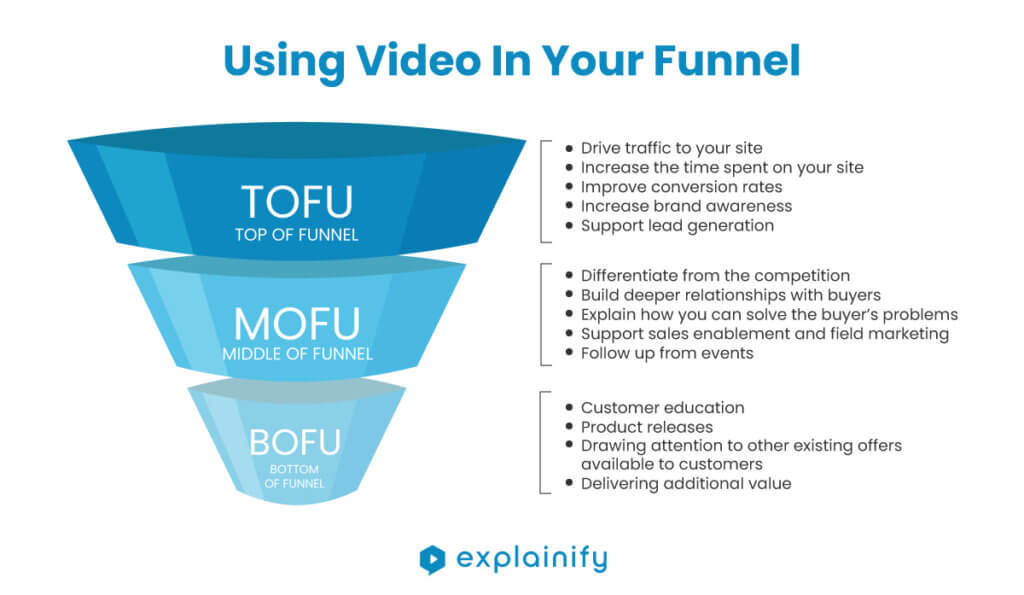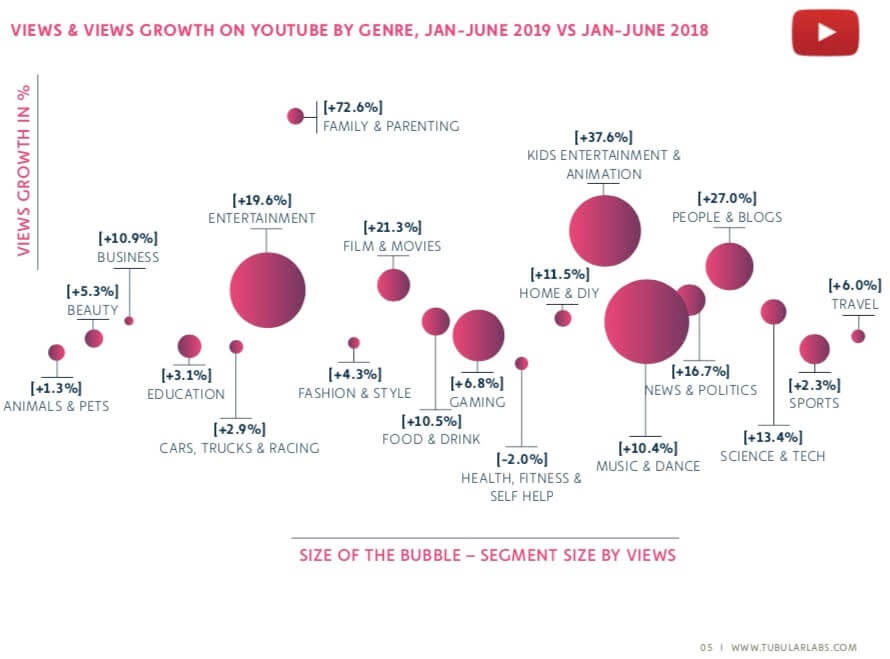Congratulations! You made the wise choice to invest in video for your company.
As we’ve said before, there’s no better selling tool than video.
But many people get their video and then don’t take the time to implement it properly, which means they’re not using it to its full potential. They want to use it and know they have to, but they’re unclear how to go about doing so. Don’t be that person!
Just because you have your video doesn’t mean the job is done. There are some necessary steps you need to take to make sure the video is placed properly and used in the most effective way to bring you the results you desire.
Let’s take a closer look at what you need to implement your video successfully.
Strategically Place Your Video Throughout Your Funnel
Video is important at every stage of the buyer’s journey and you need to look at your marketing asset mix to see where it fits. Remember, the buyer is on an educational journey as they work their way through your funnel. So all of the pieces need to make sense in the way that they lead into and support one another. Make sure the messages all align and their sequence resonates with someone who is not as knowledgeable as you are about the product and the process.
Explainer videos are best used to explain complex ideas, show prospects how you solve their problem, and how you’re different from the competition. Prospects want short-form content early in the funnel that is crystal clear and something they can relate to.

The first key area for video is at the top of the funnel (TOFU). By using video at the TOFU, you can:
- Drive traffic to your site
- Increase the time spent on your site
- Improve conversion rates
- Increase brand awareness
- Support lead generation
The next key area you’ll want to use video is the middle of the funnel (MOFU). Using video at the MOFU allows you to:
- Differentiate from the competition
- Build deeper relationships with buyers
- Explain how you can solve the buyer’s problems
- Support sales enablement and field marketing
- Follow up from events
The last area (in the funnel) you can use video is the bottom of the funnel (BOFU). This can help support:
- Customer education
- Product releases
- Drawing attention to other existing offers available to customers
- Giving additional value
Once you understand how you want to use video within your funnel, you need to understand where to place it to be the most effective. You’ll first want to make sure it’s hosted properly and share it on an asset that you own (your site, most likely). If you’re driving traffic to your own asset, you have an opportunity to capture email addresses. It’s easy to share something, but if you’re going to make a splash launching your video, you should consider how to use your assets to capture prospective clients and generate leads.
Here are some key assets that you should share your video on:
- Website – homepage or product page (Note: You will need to work with your web developers to ensure embeds are done properly, i.e. don’t make them smaller than 640×360)
- Landing pages
- In sales conversation/followup emails
- In-person meetings
- Trade shows
- Email sequences
Along with assets that you own, you’ll want to share your video on social channels. It can be useful to drop assets on all the channels where you receive the most response and be sure to share it anywhere your audience is:
- Youtube (run as targeted ads if you don’t have a channel built)
Note: Youtube is not your best bet because virality is very hard to do. Youtube sees a ton of foot traffic, so it’s great for gaining exposure. But when you host your video on Youtube, the goal is not to drive conversions – it’s a brand equity piece. Youtube also isn’t great for B2B, it’s a platform that is increasingly entertainment-oriented.
Take a look at the graphic below to see the statistics around how different industries perform on Youtube.

Get the Whole Team Onboard and Aligned with Your Messaging
Once you have your video, It’s important to have your teams aligned with this new and refined brand messaging. Video is an easy way for them to consume and re-share your message because it acts as an aligning force.
It is helpful to call a meeting to share the video with everyone on your team. Ensure everyone knows it exists and understands the messaging in the video. For any asset you invest in that helps develop or communicate your brand, you want to make sure everyone in your company is aware, especially your sales reps.
Once you put it out in the world, make sure everyone has access and is sharing it. Use it across every platform or department where your voice is being shared. Don’t assume everyone knows it exists and that they should be using it.
Make sure to show your different teams how they can use the video. There are a lot of ways to deploy these assets and how you do it depends on your existing brand footprint.
- You can use the design files from the video to place within your marketing materials. Maybe even make an animated gif for social or a blog post.
- Use the script as copy across your websites and sales emails.
- Your transcript and the messaging in the video are great snippets for sales reps to have.
- A video can be a great way to pre-qualify sales calls so that you’re only dealing with prospects who actually understand what you’re doing.
Track the KPIs That Matter
The last element of implementing your video is tracking the right KPIs. As you start tracking, you’ll find that some metrics are easier to track than others.
- The easiest thing to track is views but that’s a vanity metric – it’s not exactly helpful and doesn’t drive any other insights.
- You can track how much of the video is being watched to check if viewers are seeing enough of the core messages (tip: the standard is getting close to 60% watched)
- Track # of MQLs and SQLs
- Conversion rates: Determine how many of your converted sales were people who watched your video. Track who clicked on your video to see what the lead conversion rate is. Share the video in different parts of the funnel and track each video’s performance. Then compare to see where it is performing and converting better.
Measure performance in a way that aligns with your goals
If you don’t have the tools in place to track specific metrics, you can at least gain performance insight through conversations with your sales team. It’s helpful to ask questions such as:
- Are you closing more deals?
- Is the space between contact to close shortening?
- Are people coming to us because of the video?
- Are people talking about the video?
- What are they saying?
KPIs are important but most people need video first from a message, alignment and brand perspective. It’s OK if you don’t pull off a full-fledged marketing campaign with the video – getting your messaging aligned is a win in itself.
If you’re not sure about the technical side of video marketing implementation, consider using these resources as inspiration.
To Recap:
The implementation of your video is just as crucial as creating one in the first place. By understanding how to use the video and where it fits in your funnel, you can use it to guide people through the buyer journey successfully. You also need to get your team aligned with the message so that all departments are using the video and talking about your products in a consistent way.
Finally, you’ll want to track the right KPIs in order to see how your video is performing and where you can tweak your strategy to produce even better results. (If you need more guidance on how to track these KPIs, stay tuned for our next post.)
If you’re interested in discussing your strategy with a team of experts, reach out to Explainify today.



